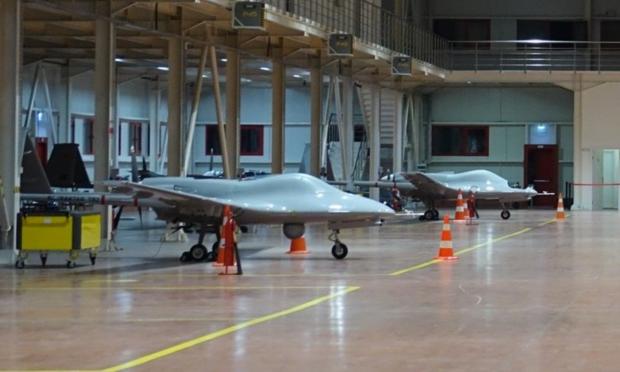Plans to encircle our country from the South, despite the very good climate between us, which is artfully advertised by the Turkish side, we see it developing in Libya.
Turkish offensive unmanned aerial vehicles of the Bayraktar TB2 S type with an integrated SATCOM system (satellite control) have appeared in Libya, without specifying whether they concern the Tripoli regime, or the Turkish forces located there, while no number is mentioned.
Bayraktar TB2S, with SATCOM, appeared in Libya, with SATEllite meaning satellite communication.
This term generally refers to the ability of various aerial platforms to communicate via satellite.
Thanks to the connection made via SATCOM, Turkish offensive UAVs will be able to communicate with the ground control station in an area as wide as the coverage area of the connected satellite, eliminating the range limitation of the line-of-sight (LOS) link.
In short, the Turks can use the TB2 UAVs in a very large area of the Eastern Mediterranean, without for example being able to use jamming systems, since the Turkish vehicles are controlled by satellite.
Turkish ANKA-S type UCAVs will also have SATCOM systems in the future, according to Turkish expert H. Kılıç, who said that this will have a range limitation due to the amount of fuel.
Turkish offensive unmanned aerial vehicles will be able to cover huge areas in our region threatening every movement of our country.
"In other words, with the TB2 SATCOM version that can stay in the air for 24 hours, we can fly and return to an area with a flight distance of more than 10 hours," Kılıç emphasized.
“UAVs have two separate communication frequencies, one of them provides the control of the platform during the flight and the other plays a role in transferring the images taken by the camera to the special center. As far as I know, a different satellite dish was used on TB2 than on ANKA-S.
However, both do the same job. As a result, TB2 will be used operationally within the coverage of the TURKSAT 4B satellite.
Here, I would like to point out that the coverage area of the satellite extends from Central Asia to North Africa and Northern European countries.
The satellite from which the Turkish TB2 drones will be controlled covers the entire continent of Europe," he emphasized.
What does the SATCOM system change?
"There are two main benefits they will add to TB-2 regarding the SATCOM system compared to the old TB-2, which is controlled from the ground," Kılıç emphasized, explaining the benefits as follows: "First, as I said above, we will gain the ability to fly and operate at a much greater distance. The other is that we are solving the problems that we experienced during Operation Spring Shield in Syria.
Enemy electronic jamming was sometimes effective on Turkish UAVs, causing them to go down.
Now our UAVs will in any case switch to autopilot and land autonomously at the base they took off from, thanks to our auto-return software.
The Turkish expert emphasizes that the SATCOM system is much more protected from electronic warfare elements.
Another issue Turkish defense analyst Hakan Kılıç focused on is how the SATCOM system would affect overseas operations conducted with TB2s.
We remind you that we reported a few months ago that according to a Turkish website, "Libya (GNA) is to receive 50 TB-2 drones and related munitions within 2022, as a lease payment from Turkey for the recently signed agreement on the exploitation of hydrocarbons in the Libyan EEZ".
After Cyprus, Turkey is reportedly moving dozens of unmanned aerial vehicles to Tripoli, Libya, which will be manned by Turkish officers, in an effort to encircle our country from the South.
Turkey is eagerly looking for a challenge to begin unfolding its plan against the Greek EEZ, raising issues such as sovereignty within Greek islands, while the Turkish armed forces are preparing with special exercises even in scenarios of occupying micro-islands.


